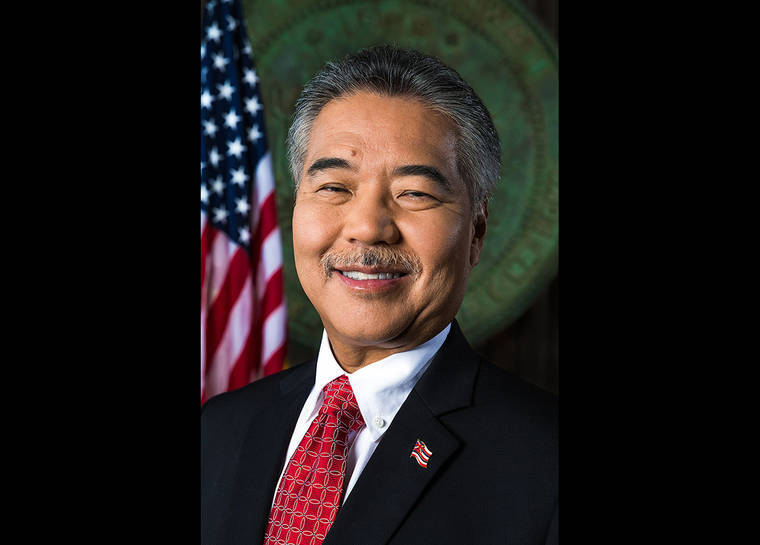Local support for teacher pay raise
HILO A proposal by the state Department of Education aims to address Hawaiis teacher shortage by increasing pay for classroom teachers in areas that faced the most severe shortages: special education, Hawaiian language immersion programs and geographically hard-to-staff areas.
HILO — A proposal by the state Department of Education aims to address Hawaii’s teacher shortage by increasing pay for classroom teachers in areas that faced the most severe shortages: special education, Hawaiian language immersion programs and geographically hard-to-staff areas.
The plan calls for special education teachers to receive an additional $10,000 annually, Hawaiian language immersion teachers to receive an additional $8,000 and those teaching in geographically hard-to-staff schools to receive $3,000-$8,000.
Gov. David Ige, state Superintendent Christina Kishimoto and others spoke about the proposal — which will be considered Thursday by the state Board of Education — during a news conference Tuesday at Central Middle School in Honolulu.
If approved, the pay differential would be implemented Jan. 7, 2020.
“I’m excited about the department’s proposal to increase compensation for teachers in those areas that we’ve had a tough time filling,” Ige said. “This is the first step of a comprehensive program that we are looking at to end the teacher shortage, and we are starting with those positions that have been the toughest to staff all across the state.”
While there is “no single solution” to teacher staffing challenges, Kishimoto said the problem is solvable, but “we must take bold action to help us realize Hawaii’s exceptional public education system. Inaction is not an option, and that’s why we’re here today.”
The department promised to provide “equitable access to quality education” to every student in the state, she said.
“Fulfilling this promise begins with the department ensuring that our students have access to high-quality teachers for every student, every child, every classroom across our state,” Kishimoto continued. “The difficulties in recruiting and retaining qualified teachers for special education, Hawaiian language immersion programs … and hard-to-staff areas has created an equity issue for our students with the highest needs. This is an equity issue, and we need to call it what it is.”
By targeting these areas in phase I, “we are taking bold action to address the achievement gap that has impacted our schools for too long,” she said.
“I think this is a great move on the part of the department,” said Hilo-Waiakea Complex Area Superintendent Esther Kanehailua.
“It’s a bold move, as Dr. Kishimoto said,” but Kanehailua said it’s one that needs to happen, especially when thinking about “our most vulnerable learners,” who are at a disadvantage when in a classroom without licensed or qualified teachers.
And while the Hilo-Waiakea Complex Area doesn’t have a hard-to-fill designation, “that’s still an issue for our island,” she said.
She knows teachers who taught in such areas — such as Ka‘u or Naalehu — who “just can’t afford to drive back and forth every day,” but “maybe changing that differential is going to make a difference for them.”
Kanehailua is hopeful the increased compensation will attract more people to become or remain special education teachers, who have additional responsibilities, or entice people to stay at schools that are considered hard-to-fill.
“Today is a good day for the keiki of Hawaii in trying to fulfill that dream that all of our children, regardless of where they live, what their ethnicity is, what their special needs are, that all of them have access to qualified teachers,” said Corey Rosenlee, president of the Hawaii State Teachers Association, a union representing 13,700 public and charter school teachers throughout the state.
BOE Vice Chairman Brian De Lima told the Tribune-Herald that he will support the proposal.
“I’m encouraged by the fact that the teacher’s union and the administration, as well as the executive branch, are united in recognizing the need to attract qualified teachers in areas that are hard to staff,” he said Tuesday. “(There) is a nationwide shortage of special education teachers, so this proposal is to deal directly with the shortage of special education teachers, as well as hard-to-staff areas throughout the state.”
According to the DOE, there are 1,691 eligible special education teachers, and the department estimates the special education pay differential would cost $8.45 million in the current fiscal year, which ends June 30.
The hard-to-staff differential is estimated to cost an additional $6 million in fiscal year 2020, based on 2,109 teachers in all tiers of hard-to-staff areas, and the Hawaiian immersion differential is expected to cost approximately $216,000 in FY 2020, based on 54 teachers who are currently eligible.
Kishimoto said in a memo to BOE Chairwoman Catherine Payne that the costs for fiscal year 2020-21 are estimated to be $16.91 million for special education differential, $12.68 million for hard-to-staff positions and $856,000 for the Hawaiian immersion differential.
Ige said during the news conference that upon approval by the BOE, funding for the initiative would be included in the executive supplemental budget, which covers both years of the biennium and which will be submitted to the state Legislature later this month.
That would adjust funding for the DOE in the current fiscal year as well as increase funding for the 2020-21 fiscal year. It would have to be approved by the Legislature.
“Certainly, we are working with the Legislature and would hope that they would support the proposal in the current fiscal year, but we have prepared it, and it’s included in our financial plan so there wouldn’t be extreme difficulty in embracing that,” Ige said.
Work is underway on phase II of the initiative, and the DOE anticipates introducing a subsequent proposal to the BOE in January, which will coincide with the release of the results of the teacher salary study the DOE commissioned earlier this year.




